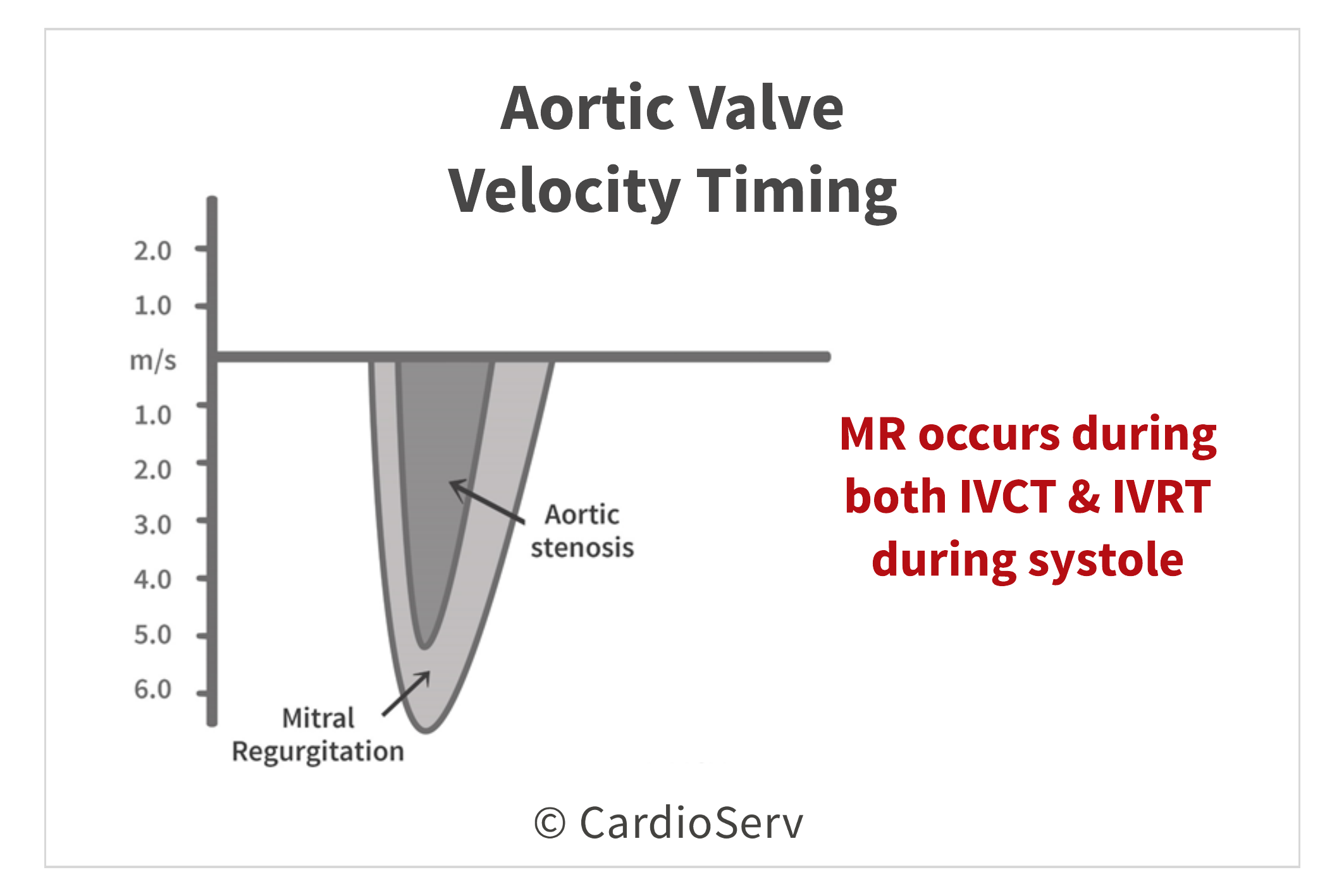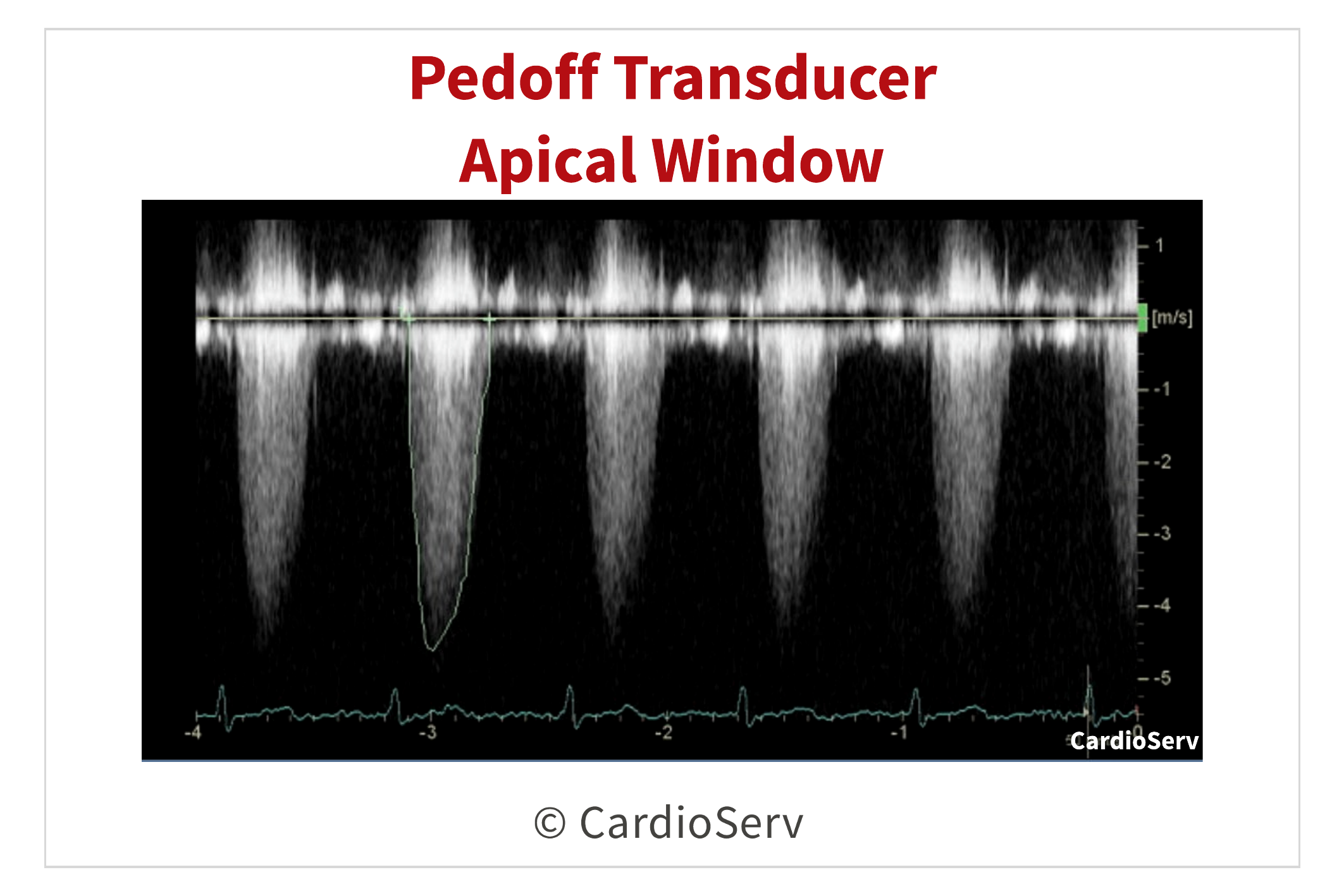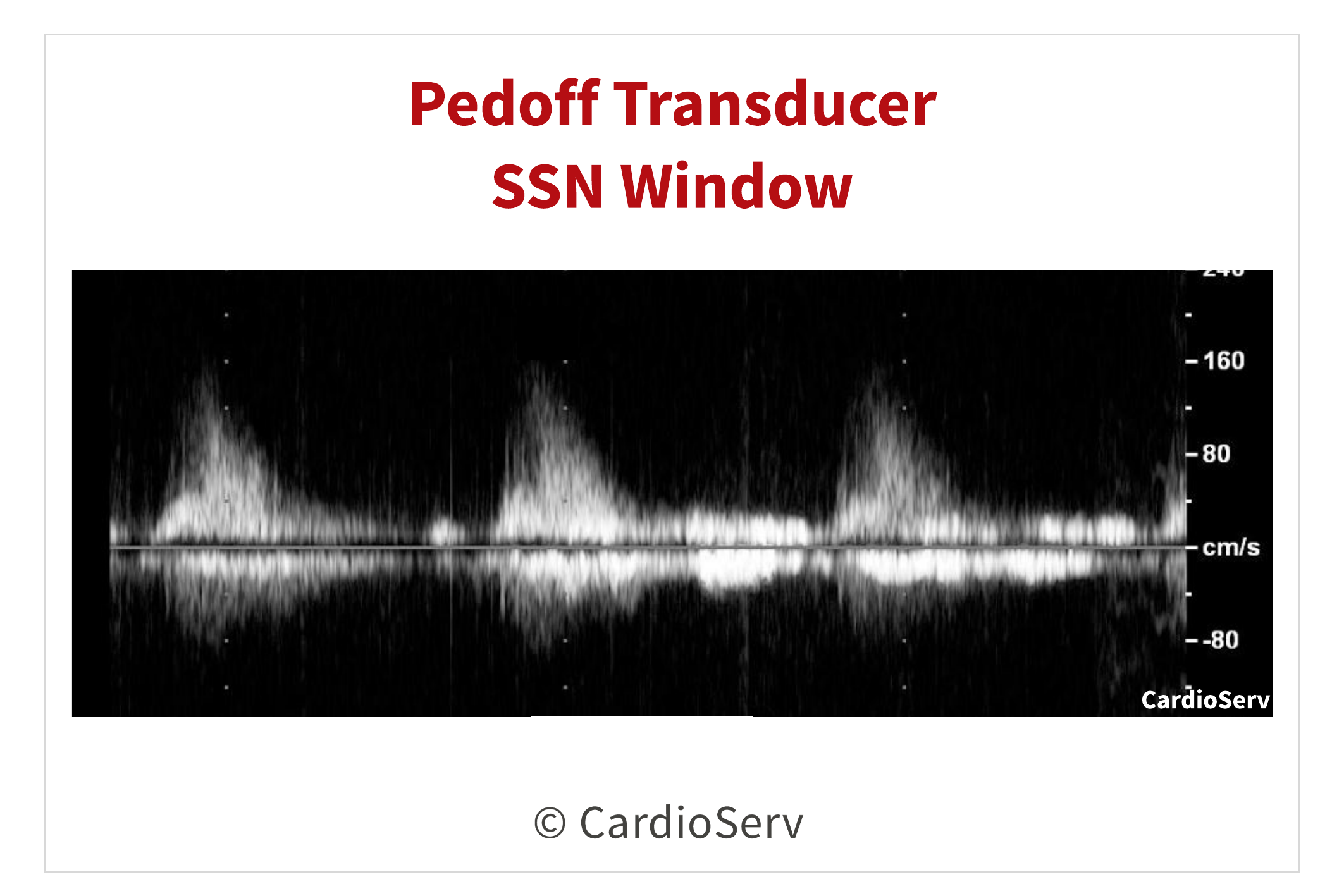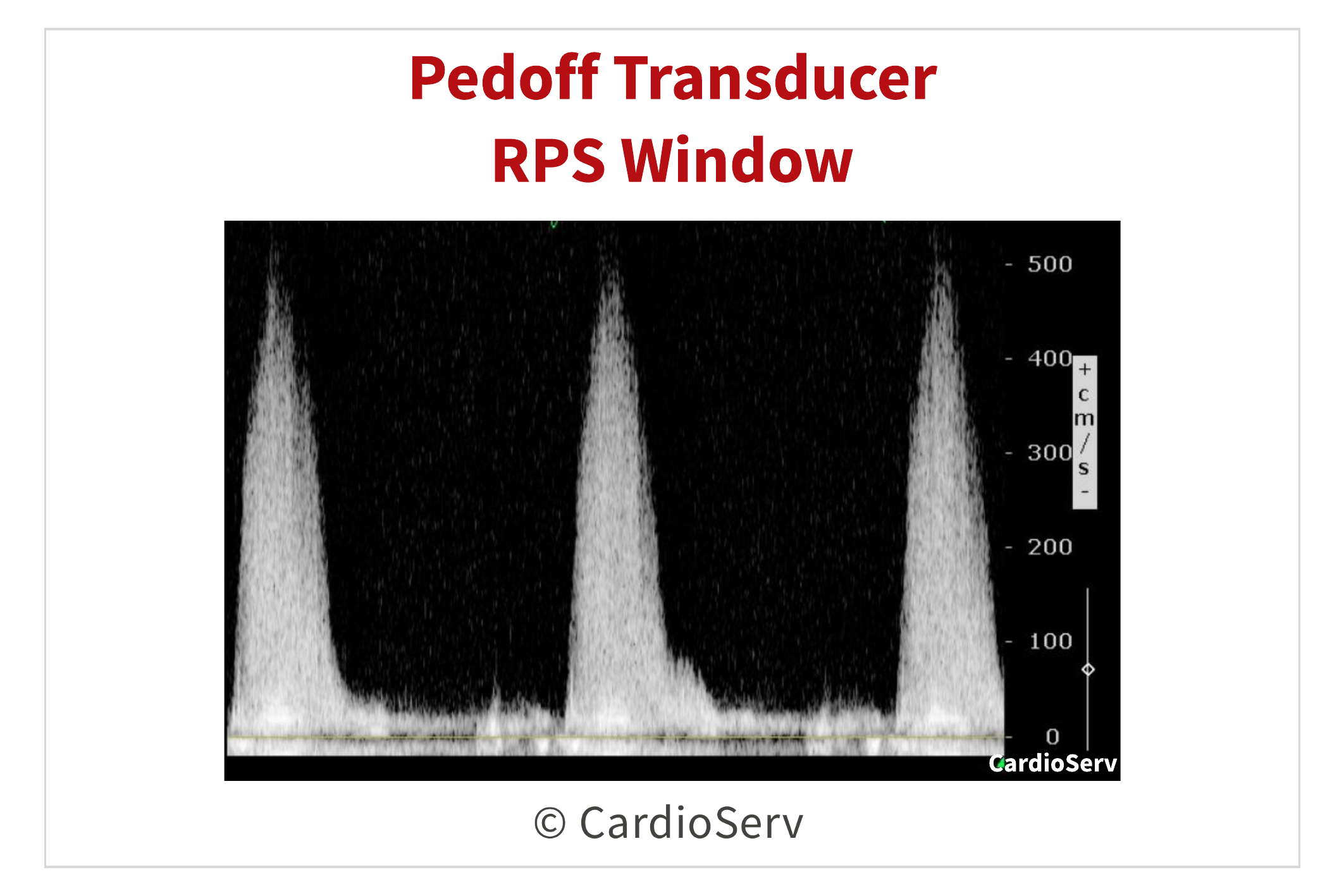Before harmonic imaging, our imaging transducers had major limitations when it came to obtaining high-velocity gradients with continuous-waved (CW) Doppler. Two of the main restrictions included the ultrasound frequency (no ability to drop down to a lower frequency) and the large footprint of the transducer. The footprint caused limitations when angling the transducer between the rib cage for high Doppler velocities. In these situations, a non-imaging CW Doppler transducer would be used (commonly referred to as the Pedoff transducer).
This non-imaging transducer is extremely helpful for obtaining high velocity gradients. With the probe being small in size, easy to hold and having a small footprint, it can easily be placed between the ribs to acquire the desired Doppler angle. The Pedoff probe has 2 large crystals: 1 that sends & 1 that receives signals. Having a higher signal-to-noise ratio allows the probe to recognize and display high velocities along the ultrasound beam pathway.
One of the main limitations to the Pedoff transducer is that it’s non-imaging, providing zero guidance to anatomical location and structures. Many clinicians joke about the love/hate relationship they have with the Pedoff probe. Love using it, because it better identifies stenotic gradients, especially in the presence of eccentric flow and challenging body habitus. Hate using it because you have zero imaging reference for us visual sonographers!
One of the most common reasons to dust off the Pedoff probe is to correctly identify severely stenotic valves with high velocity gradients. The two most common being: mitral and aortic stenosis.
Using CW Doppler involves understanding the physics behind the sound waves transmission, knowledge of cardiac anatomy & valvular audio sounds! There are 3 common locations to use the Pedoff probe:
Acquiring the skill set to feel confident when using the Pedoff probe takes time and patience. The best advice is to close your eyes and listen, making slow tiny movements with the probe to bring in a strong audio and Doppler signal.
The apical window is the best place to start when using the Pedoff probe.
Tiny movements of the probe will provide audio and Doppler signals. This will help you identify the direction to move, in order to obtain the gradient. Think of the movements as if rotating from an apical 4 chamber to apical 5.
Understand the different appearances of mitral regurgitation (MR) vs. aortic velocity (AV)

By identifying the Doppler pattern of the specific valve, it will help you know which way to angle the probe more! Understanding the anatomy of the heart also gives insight to which direction to tilt the transducer.
When evaluating for peak AV velocity in the apical window, the Doppler velocity will be below the baseline:

We can place the Pedoff probe in the suprasternal notch (SSN) window to obtain a velocity that will appear above the baseline.

Either you rock at obtaining the RPS velocity, or it’s the toughest window for you to acquire. Either way, this view can be the best window to obtain the highest AV velocity due to the angle of the ultrasound beam in relation to the aortic valve. The velocity in the RPS window will be above the baseline.

Additional RPS Tips:
Intersocietal Accreditation Commission (IAC) requires aortic stenosis case studies utilize the non-imaging Pedoff CW Doppler transducer. If your laboratory holds IAC accreditation or is in the process of acquiring, the following should be routinely performed for aortic stenosis case studies:
Pedoff Doppler is extremely helpful in cases that have high valvular gradients, such as aortic stenosis. Utilizing this method can help bring in the highest velocity of a stenotic valve. Learning to use this non-imaging transducer takes time and practice, but provides many benefits to the patient’s outcome.
Earn 0.25 CME for this blog. Start now
Other CME topics:
 Andrea Fields MHA, RDCS
Andrea Fields MHA, RDCS
Stay Connected: LinkedIn, Facebook, Twitter, Instagram




Mar
2018
Mar
2018
Mar
2018
Apr
2018
Sep
2018
Oct
2018
Apr
2019
Oct
2019
Jan
2021